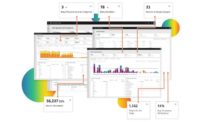In the last decade, digital technologies have transformed physical security by updating and speeding up communications and integrating stand-alone security devices into comprehensive, accessible and data-driven information systems.
This improved, connected ecosystem that links physical security with cybersecurity and IT security is breaking down silos and directly addressing the system weaknesses that could thrive in the older, unconnected world. In the past, an unauthorized physical access to a data center could allow a thief to download valuable company data onto a USB or allow a cyberattacker to inject malicious code or malware. Preventing these actions are a focus for the most advanced solutions that are designed for the real challenges of today.
Manual Systems are Vulnerable
As suggested above, physical access to critical resources and sensitive areas such as data centers and storage areas for narcotics or nuclear materials needs to be protected 24/7. In the past, manual process management was sufficient, as the access rules were simple and the world was not as dangerous as it is now.
Today, the access rules are much more complicated. Physical spaces are partitioned into smaller, more specific areas — each with unique risk levels and access rules. Workers have their own permissions, requirements, timeframes and access risk levels, adding to the complexity — for example, it may be that providing access to a contractor has higher risk compared to an employee. Relying on a manual process to assign the right access privilege to the right worker identity at the right time can result in errors. Unfortunately, the result of these mistakes could cost a company millions of dollars, reputation loss or in the worst cases, imprisonment of executives.
What’s needed is the next generation of data-driven, artificial intelligence (AI)-reinforced physical identity and access management (PIAM). Imagine a PIAM system that can automatically compute:
- Exactly what physical access a new hire would need to conduct their job
- Which identity could pose risks to corporate security
- Which identities are holding over-provisioned physical access
- Which contractor should have their access revalidated
- Which credentials may have been compromised
The list can go on — these are just a few of the important detections and decisions that are currently being handled manually in too many organizations. A human-managed access provisioning system cannot uncover these important issues reliably, accurately and in a timely fashion.
The Power of a Data-Driven PIAM
In contrast, consider the power of a leading-edge, fully automated data-driven PIAM system. Leading data-driven PIAM systems continually evaluate hundreds of scenarios that could compromise the security of an identity, a physical space, or an Internet of Things (IoT) device. These PIAM systems bring multiple disciplines together under one offering, so there is no need to have separate systems managing separate, siloed pain points.
As an example, consider a new hire that will work remotely or in a hybrid arrangement. With data-driven PIAM automation, it is possible to easily initiate at-home onboarding, including providing access rights only to the correct areas based on the new hire’s peers, ensuring that a usable photo is captured, and generating a new badge to be mailed for at-home activation. Once the new employee is onboarded, the self-learning next-generation PIAM and AI algorithms continue monitoring access usage and accurately identify any abnormal physical access attempts or excessive access privileges. The system can then provide confidence scoring that physical security teams can use to make ongoing actionable decisions.
Benefit of Continuous Monitoring
One vexing problem with even the most capable manual processes is the ability to monitor access patterns over time and analyze those patterns in the context of other related information, such as updates in training or HR systems. Over time, manual systems are likely to miss gaps in their access control and access provisioning processes as well as developing insider risks.
AI based on machine learning is the ideal foundation for automating physical security-related workforce identity and access management and implementing continuous monitoring. When AI is supplied with rich data representing all aspects of identity and their access usage, it can streamline and automate intelligence across all access management and access audit use cases, including access requests, access audits, enabling/disabling badges etc.
In addition, applying artificial intelligence with the power of real-time data strengthens the organizational defenses at the identity and physical perimeter immediately. This directly addresses unauthorized access, which continues to be the most common source of security breaches.
Beyond the Horizon
Don’t remain hobbled by legacy PIAM solutions, relying on error-prone manual processes and ignoring the potential benefits of mining access data for business intelligence. Teams can meet their security objectives and their compliance requirements faster, while mitigating risks and reducing costs across the entire organization. By automating every aspect of PIAM and implementing an intelligent AI-powered PIAM solution security teams can move access control beyond the horizon.




